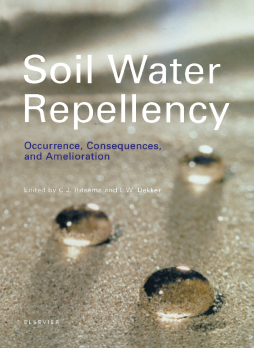
Additional Information
Book Details
Abstract
It has become clear that soil water repellency is much more wide-spread than formerly thought. Water repellency has been reported in most continents of the world for varying land uses and climatic conditions. Soil water repellency often leads to severe runoff and erosion, rapid leaching of surface-applied agrichemicals, and losses of water and nutrient availability for crops. At present, no optimum management strategies exist for water repellent soils, focusing on minimizing environmental risks while maintaining crop production.
The book starts with a historical overview of water repellency research, followed by seven thematic sections covering 26 research chapters. The first section discusses the origin, the second the assessment, and the third the occurrence and hydrological implications of soil water repellency. The fourth section is devoted to the effect of fire on water repellency, section five deals with the physics and modeling of flow and transport in water repellent soils, section six presents amelioration techniques and farming strategies to combat soil water repellency, and section seven concludes the book with an extensive bibliography on soil water repellency.
J.R. Bachmann
...particularly useful for researchers and practitioners in environmental disciplines, who are interested, but not specialized, in soil water repellency. ...is recommended for students and managers of natural resources, such as agronomists, foresters, hydrologists, botanists, geologists, and geographers, as well as civil, sanitary, and chemical engineers. It is also a valuable source book for graduate students concerned with plant production, soil quality, as well as ground water and surface water hydrology.
Journal of Environmental Quality
